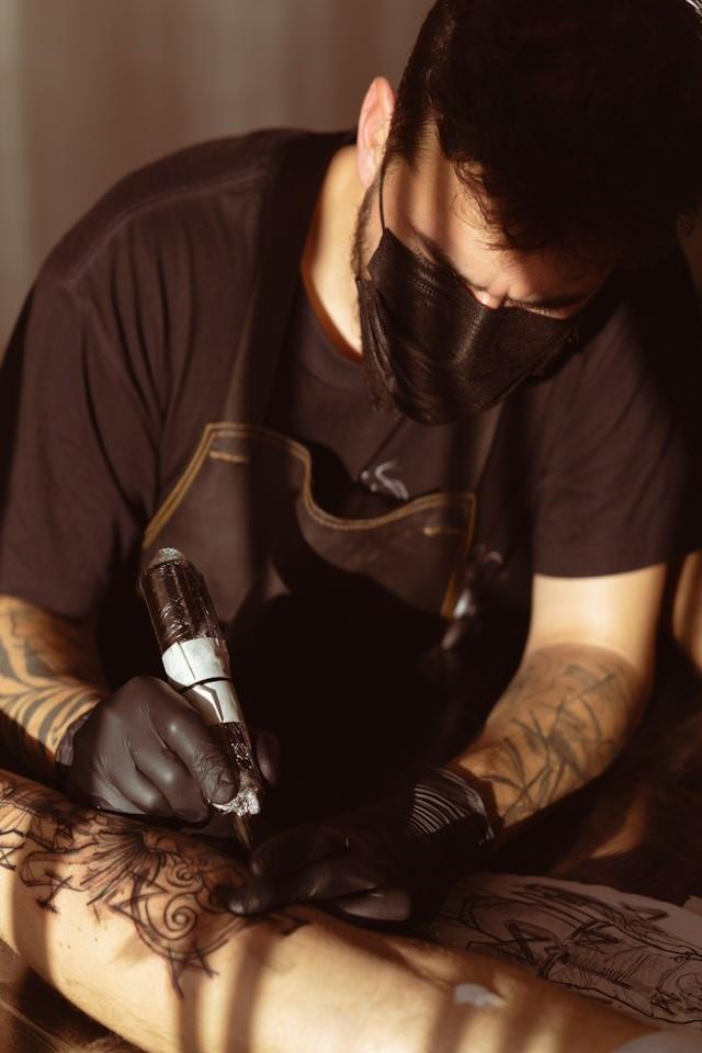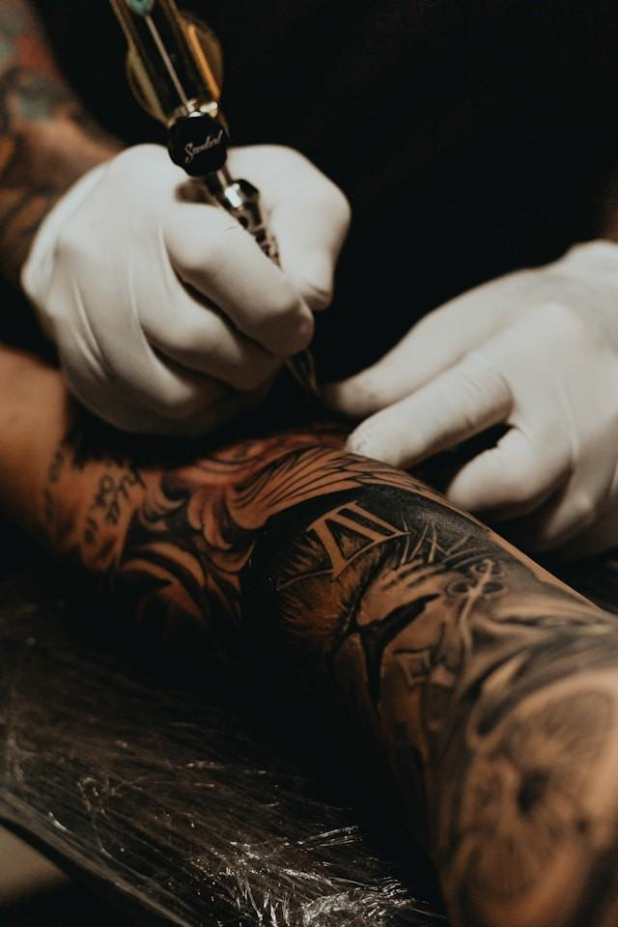
Tattooing is one of the world’s oldest art forms, deeply rooted in cultural expression, personal identity, and storytelling. Today, it has evolved into a highly respected craft requiring not just creativity, but also technical skill, hygiene knowledge, and professionalism. For aspiring artists, the journey into this field almost always begins with one essential step: an apprenticeship.
This is far more than just an introduction to the industry, it’s a structured, hands-on training experience that shapes raw talent into professional artistry. Under the mentorship of an experienced tattooist, apprentices gain the skills, discipline, and industry knowledge necessary to succeed in a competitive field.
Unlike other creative fields where self-study might be enough to begin, tattooing demands formal mentorship for several reasons:
Health and Safety: Tattooing is a process that involves breaking the skin, which carries potential risks of infection and cross-contamination. That’s why proper training is essential. Apprentices learn strict sterilization practices, bloodborne pathogen protocols, and the correct handling of all equipment. They’re also taught the importance of protective barriers, such as tattoo gloves, which serve as a critical safeguard for both the artist and the client during every session.
Hands-On Learning: No textbook can fully prepare someone for the feel of a tattoo machine in their hand. Apprenticeships allow students to build muscle memory and develop control under expert supervision.
Industry Standards: Each tattoo shop has protocols for client communication, session setup, aftercare, and professionalism. Apprenticeships expose students to these expectations firsthand.
Building Trust: Clients are unlikely to trust a self-taught artist without industry validation. Apprenticeships provide credibility and reassurance that an artist has been properly trained.
Tattooing is both an art and a responsibility, and an apprenticeship ensures that new artists respect both sides of the craft.
While each shop structures its apprenticeships differently, most follow a progression that balances observation, practice, and mentorship.
Apprentices typically begin by assisting around the shop. This may include cleaning, sterilizing equipment, setting up workstations, and learning the workflow of a professional studio. While some may view this as “grunt work,” it’s actually one of the most important stages. It instills discipline, respect for hygiene protocols, and an understanding of how a studio operates day to day.
Alongside shop duties, apprentices are expected to hone their drawing skills. They often create flash sheets, sketch custom designs, and practice linework and shading on paper. Some mentors also require apprentices to replicate classic designs to understand balance, proportion, and style.
Before ever tattooing skin, apprentices practice with tattoo machines on synthetic skin, fruit (like oranges or pigskin), or other surfaces. This stage focuses on mastering machine handling, needle depth, and steady hand control.
Once an apprentice demonstrates competency and their mentor trusts their skills, they begin on real clients, usually starting with friends, family, or volunteers. These early tattoos may be simple linework or small designs, gradually progressing to more complex pieces. Every step is supervised to ensure safe and professional results.
Over time, apprentices create a body of work that demonstrates their style, range, and growth. This portfolio is not only a personal achievement but also a key tool for attracting clients once they transition into a full-fledged artist.
A tattoo apprenticeship develops far more than technical skill. It creates well-rounded professionals capable of thriving in the industry. Some of the most valuable skills gained include:
Technical Proficiency: Mastery of linework, shading, color blending, and composition.
Hygiene and Safety: Knowledge of sterilization techniques, safe disposal of needles, and cross-contamination prevention.
Client Communication: Learning how to consult with clients, manage expectations, and provide aftercare instructions.
Artistic Growth: Refining personal style while also adapting to client requests.
Professionalism: Time management, maintaining a clean workspace, and adhering to shop policies.
By the end of an apprenticeship, an artist is not only prepared to create tattoos but also to uphold the standards of the industry.
One of the most defining aspects of a tattoo apprenticeship is the relationship between mentor and apprentice. This bond shapes not only the apprentice’s technical development but also their professional identity.
Guidance and Feedback: Mentors provide real-time critiques, helping apprentices avoid mistakes and improve faster.
Passing on Tradition: Tattooing has a rich history, and many shops view apprenticeships as a way to preserve the craft’s traditions while fostering innovation.
Building Confidence: A mentor’s support gives apprentices the courage to take on increasingly challenging designs.
Networking: Apprentices often benefit from their mentor’s reputation, connections, and established clientele.
This relationship is rooted in respect and trust. A good apprenticeship is not just about skill transfer but about building character and professionalism.

While apprenticeships are invaluable, they’re not without challenges.
Financial Strain: Many apprenticeships are unpaid or require apprentices to pay for training, which can be difficult for newcomers.
Time Commitment: Apprenticeships often last 1–3 years, with long hours spent in the shop.
High Standards: Mentors expect discipline, dedication, and humility. Apprentices must be prepared for tough critiques.
Limited Creative Freedom: Early on, apprentices focus on learning fundamentals rather than pursuing their personal artistic style.
Despite these challenges, those who persevere emerge as skilled, confident artists ready for a career in tattooing.
As the tattoo industry evolves, so do apprenticeships. Today, digital tools, online learning resources, and global networking have influenced how apprentices learn. For example:
Digital Design Software: Apprentices now practice tattoo designs using programs like Procreate or Photoshop, which help refine composition and color theory.
Social Media: Apprentices can showcase their progress and build an audience before officially becoming licensed artists.
Hybrid Training: Some artists combine in-person mentorship with online seminars, expanding their exposure to different styles and techniques.
While these modern tools are valuable, the traditional, in-person mentorship remains the cornerstone of professional training. Nothing can replace the direct guidance of a skilled artist in a live studio environment.
Tattoo apprenticeships don’t just benefit individual artists, they shape the industry as a whole. By ensuring that new artists are trained in hygiene, professionalism, and technical skill, apprenticeships maintain the credibility and safety of tattooing as a respected craft. They also foster diversity in styles, as mentors pass down their techniques while encouraging apprentices to innovate. This dynamic keeps tattooing alive, fresh, and culturally relevant.
Tattoo apprenticeships are the foundation upon which skilled, professional artists are built. They provide aspiring tattooists with hands-on training, industry knowledge, and the discipline necessary to thrive in a competitive and demanding field. Through observation, practice, and mentorship, apprentices learn not only how to create tattoos but also how to uphold the standards and traditions of an ancient yet ever-evolving art form.
For anyone serious about becoming a tattoo artist, pursuing an apprenticeship is more than just an option, it’s a rite of passage. It’s the bridge between raw talent and professional mastery, ensuring that the artistry, safety, and integrity of tattooing continue to grow for generations to come.